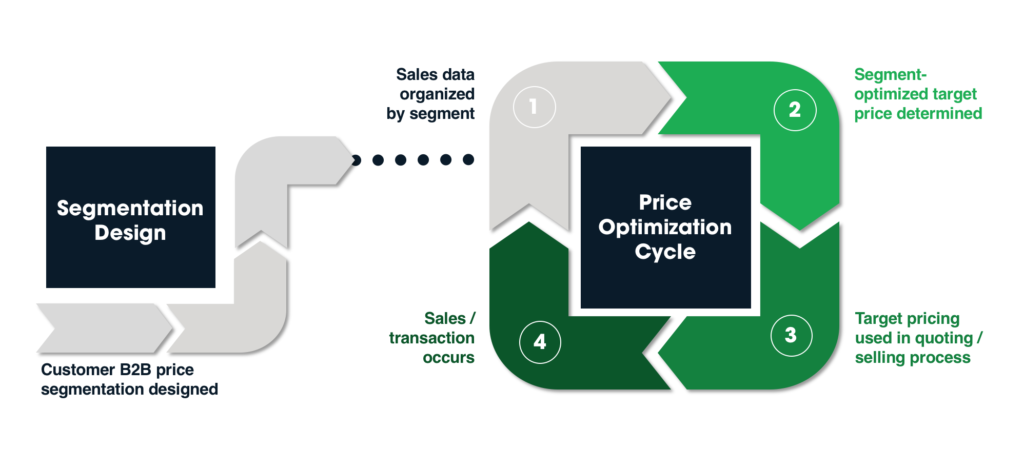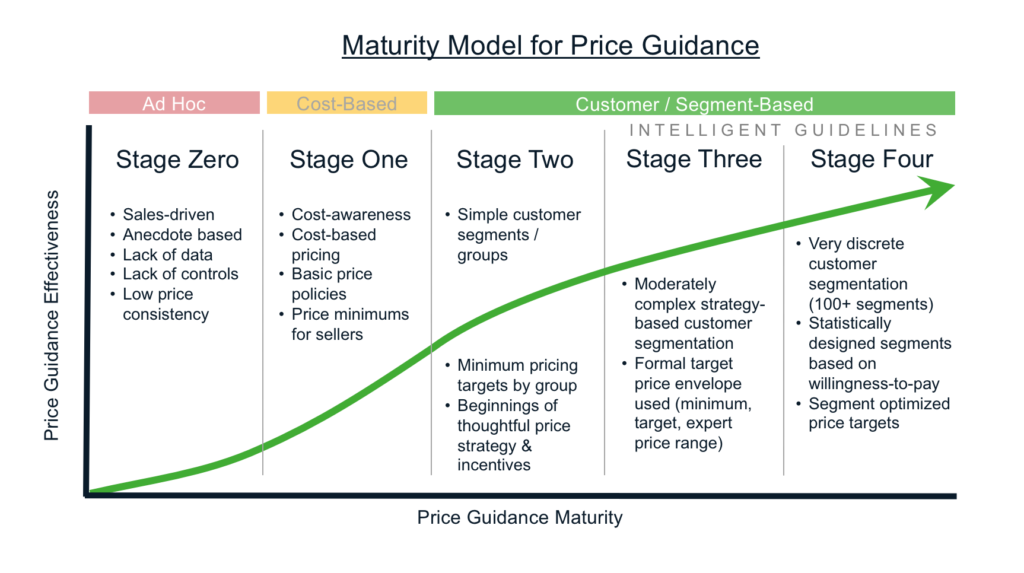
Even without using science or math-based customer segmentation, basic price optimization can still drive significant value for B2B. As a consultant at Vendavo and as someone who has deployed segment optimized pricing from inside a business, I see much confusion on the topic of pricing segmentation and optimization. At the most basic level, B2B price optimization is usually a 2 step process:
- Group customers into discrete segments in order to establish peer customers for price setting.
- Analyze past customer sales pricing data and other factors in these customer segments and use techniques to determine an opinion of price/target price for any future pricing decision.

There are several ways to approach both segment design and the determination of target prices. Today we will focus primarily on the first step of this process: designing a useful customer segmentation to apply price optimization techniques.

A math-based segmentation approach does have value. I am a huge proponent of using pricing science in segmentation design. Math-based techniques can discover potential customer attributes that explain pricing variation. Using those insights along with strategy to design a B2B pricing customer segmentation is a pricing best practice.
In general, when people talk about segmentation, they are usually talking about segment design where pricing science is used to identify customer attributes that explain price variation and may which predict willingness to pay. These attributes are then used to design a customer segmentation framework. Businesses should understand that they can get much value from price optimization using a customer segmentation based solely on pricing strategy alone (Stage 3 below), and there are actually substantial benefits to taking such an approach.
While valuable, using advanced pricing science techniques in the design of segmentation for an organization can have some challenges including:
- By their definition, a pricing science/AI/machine learning technique that seeks to explain the pricing variation seen in past sales data will result in identifying factors that may reinforce past selling behaviors, which may not be desirable.
- Organizations need to be ready to work with these tools. This includes not only a broad-based understanding of how they work by stakeholders, but also access to in-house or third party talent that has a deep understanding of the techniques employed to determine segment design factors.
- Effort is required to monitor and maintain math-based segmentations to ensure results are desirable (is your model chasing correlation or causation in the factors that are used to drive the segmentation?).
- Recommendations for math-based segmentations can often appear “black box” and can have adoption challenges within sales teams and therefore require more effort to achieve stakeholder buy-in.
But a segmentation based solely on pricing strategy has many benefits:
- It is structured around the pricing strategies that you desire to be the reasoning behind price differentiation (such as level of spend, easily understood difference in market characteristics including cost and competitiveness, or product end use).
- It is not complex. It is easy to understand, and more readily accepted by stakeholders.
- It avoids the cost, level of preparation, and effort needed to implement more advanced segmentation strategies.
If you’ve ever worked with any of the major management consultancies like Bain, McKinsey or BCG, you will quickly recognize that their quick-hit, early-phase pricing projects are usually based on strategy based customer segmentation. I’m suggesting that a strategy-driven segmentation is worthy of consideration. Organizations that adopt such an approach will still realize all the benefits of deploying a price optimization framework, which include:
- Using a framework for driving pricing consistency that is thoughtful to discrete customer groupings.
- Establishing an automated pricing “machine” that responds to market changes but requires little day-to-day effort to maintain.
While this approach may be, in and of itself, a fine final destination, employing this strategy as a stepping stone will prepare an organization well for eventually adopting a more sophisticated science-based segmentation technique in the future.
For more information, check out Price Segmentation: What You Need to Know.
